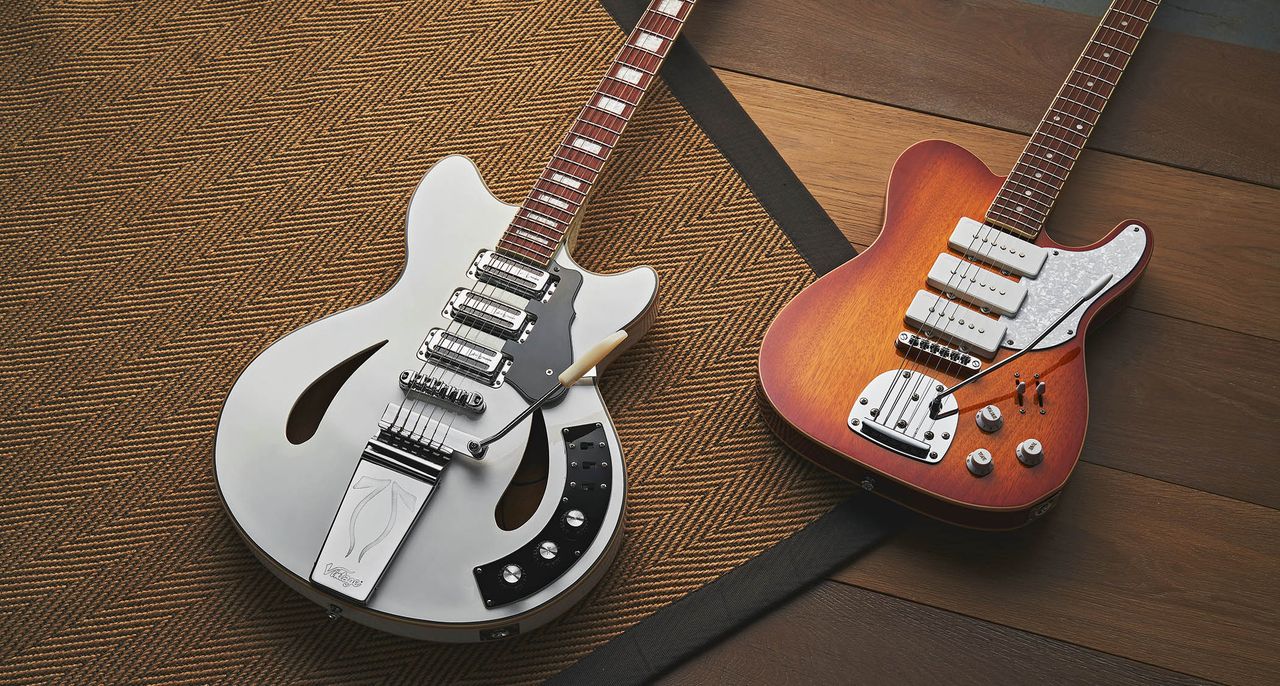
It’s a common misconception that building guitars in East Asia is dead simple. While some may think you just send your chosen factory a few CAD files and a few weeks later a container or two of perfect instruments arrive on your doorstep, the reality is very different – as the designer behind the Vintage REVO and Rapier brands, Alan Entwistle, well knows, having been living and working in China for well over a decade.
Recently back in the UK after virtually a year away, Alan admitted, “It’s been fairly intense. It’s not just the guitars, it’s the pickups and stuff and looking after the production,” which includes nearly 20 REVO models since 2024 and another 12 or so Rapier models that were first released in 2022.
With little background info on the two new REVO guitars while we were reviewing them, we had to guess the origins. And there’s no mistaking the Galactica is based on the original Höfner Galaxie.
“You’re right. It was the first decent guitar I bought. I didn’t have Fender Strat money in my wallet. Actually, I didn’t really have Höfner Galaxie money in my wallet! I went into Reidys in Blackburn – it must have been in 1965 – and they had all sorts of stuff, Voxes, Strats, Shaftesbury… and there was this Galaxie sat there.
“It was really nice, clean and, of course, it was red! It looked the business and it was on sale for 55 guineas, so I took it on a two-year hire purchase agreement. I really got into it; it had lots of sounds, different tones.”
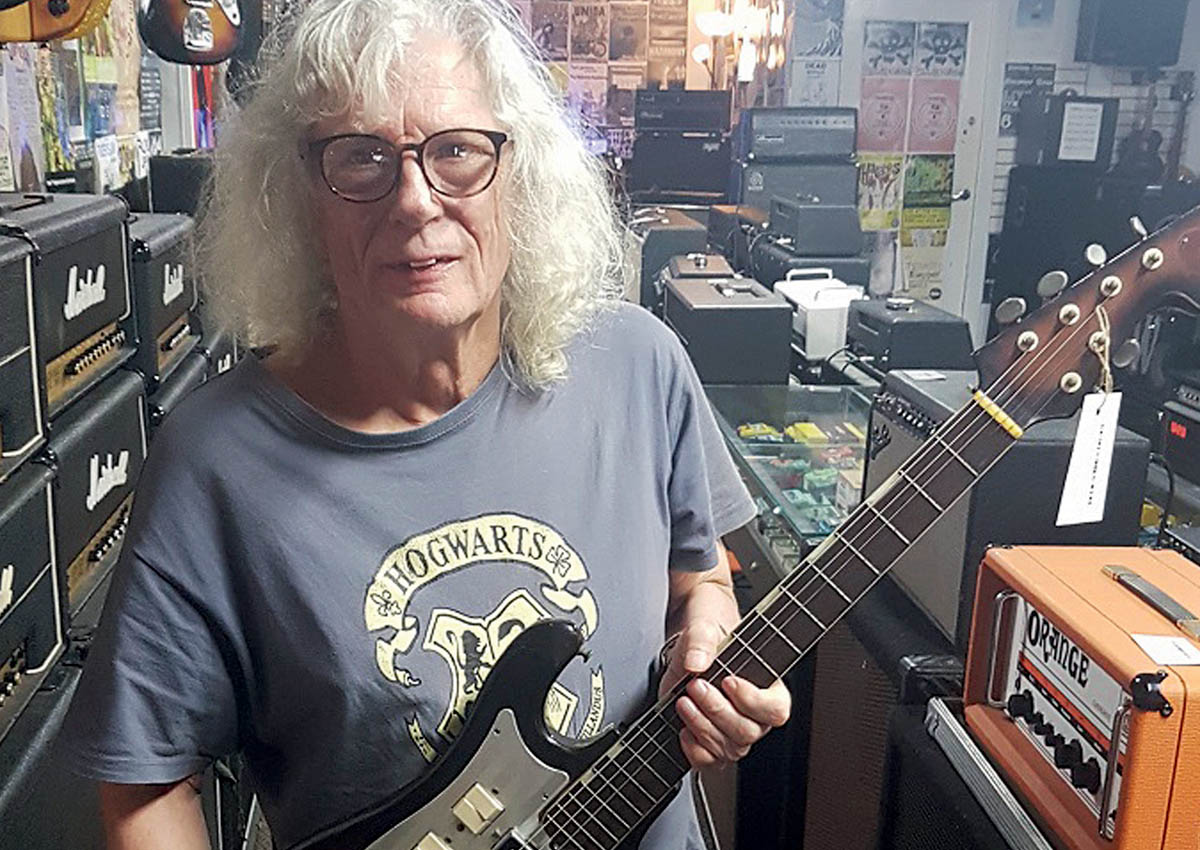
Remaking old-design pickups for the modern market is a big part of your design ethos. Tell us more about these units.
“The Galactica’s HFS63 mini-humbuckers have neodymium magnets, two coils. They’re quite toppy for a smaller mini-humbucker: there’s that edge if you need it. They’re all wound the same. I mean, Fender has done that since the early days. I like it, I haven’t got a problem with that.
“Also those pickups are four-conductor so you could split them. If someone was really adventurous, instead of the two-way on/off slide switches that are on the guitar you could [retrofit] three-way switches so you could actually split each pickup as well. But that might be a bit OTT!”
The roller tone controls use much lower value capacitors than most electric guitars old and new.
“I really like the .015µF capacitor, especially with distortion sounds. It’s creamy, almost Santana-like.”
The .0068µF used on the lower ‘warm tone’ roller tone takes less of the overall sound away so they don’t turn the guitar into a woofy mess. That’s the idea, right?
“Exactly. At one time I called a regular tone with a heavier cap a ‘mudometer’.”
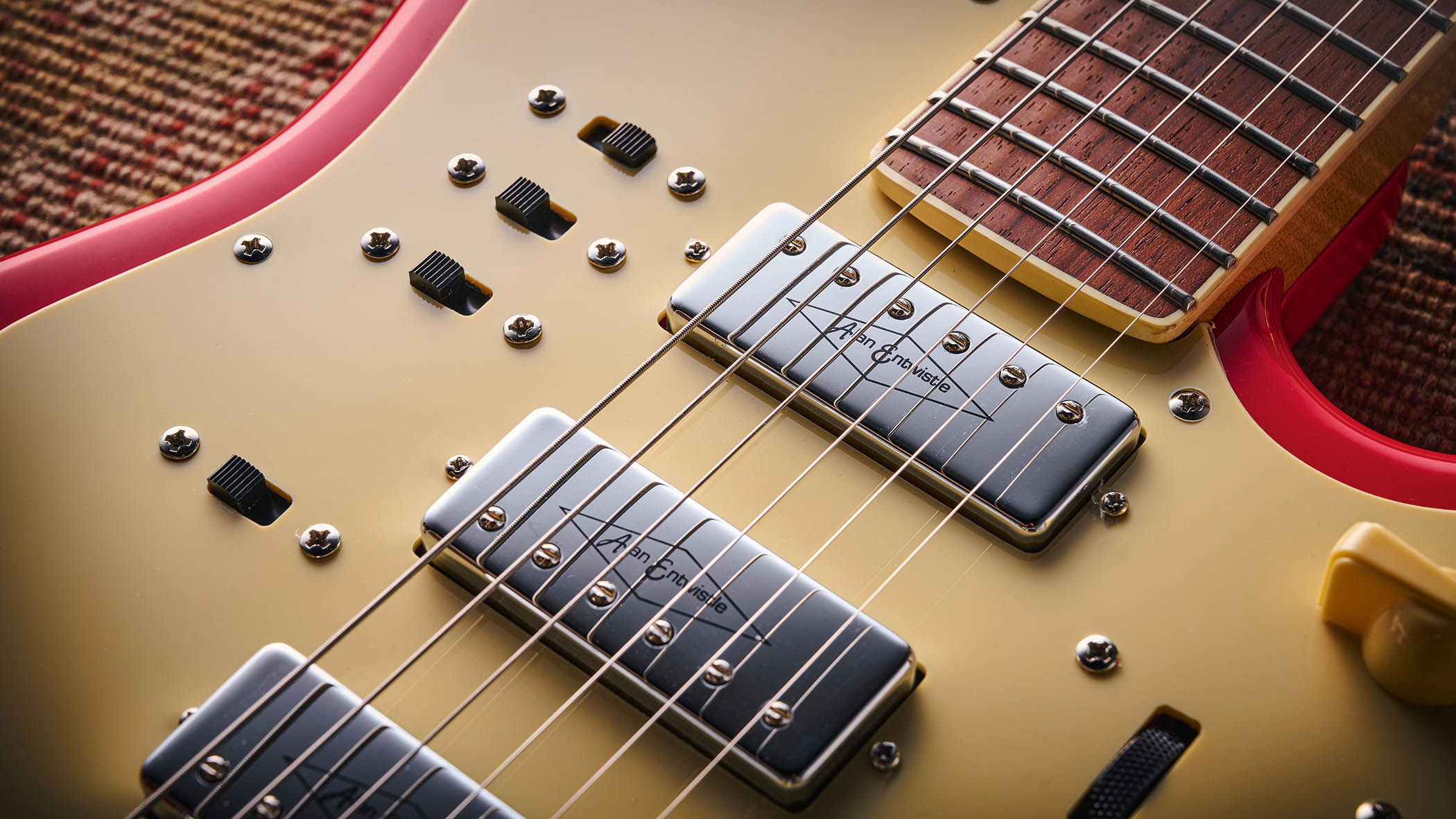
The Galactica’s ATN 5 design goes back quite a few years, doesn’t it?
“It does. I think you were the first person to review it on what would have been a Hohner JT60 ATN, the one that had a sort of Jaguar offset body and was produced in the early ’90s. It’s purely an inductance [referring to the coil itself]. It’s a couple of Henries and provides a more open sound. Try it with the volume pulled back a little – that’s how I use it.”
At one time I called a regular tone with a heavier cap a ‘mudometer’
You wouldn’t find a circuit like that in a Höfner from the 60s…
“There were a couple of versions of the Galaxie and one had a five-position rotary switch, but that just used capacitors and resistors. If they’d had the inductance coil, it would have worked pretty much like an ATN.
“Also, during the ’60s there was a character called Enrique Keller, in Northern Spain, who made and distributed Höfner-branded guitars under licence.
“He had a version, very similar-looking to the Galaxie, which actually had a transistorised circuit in it, which had six coils under the hood and a push-button for each one, plus all of the normal circuit as well. It was nuts!”
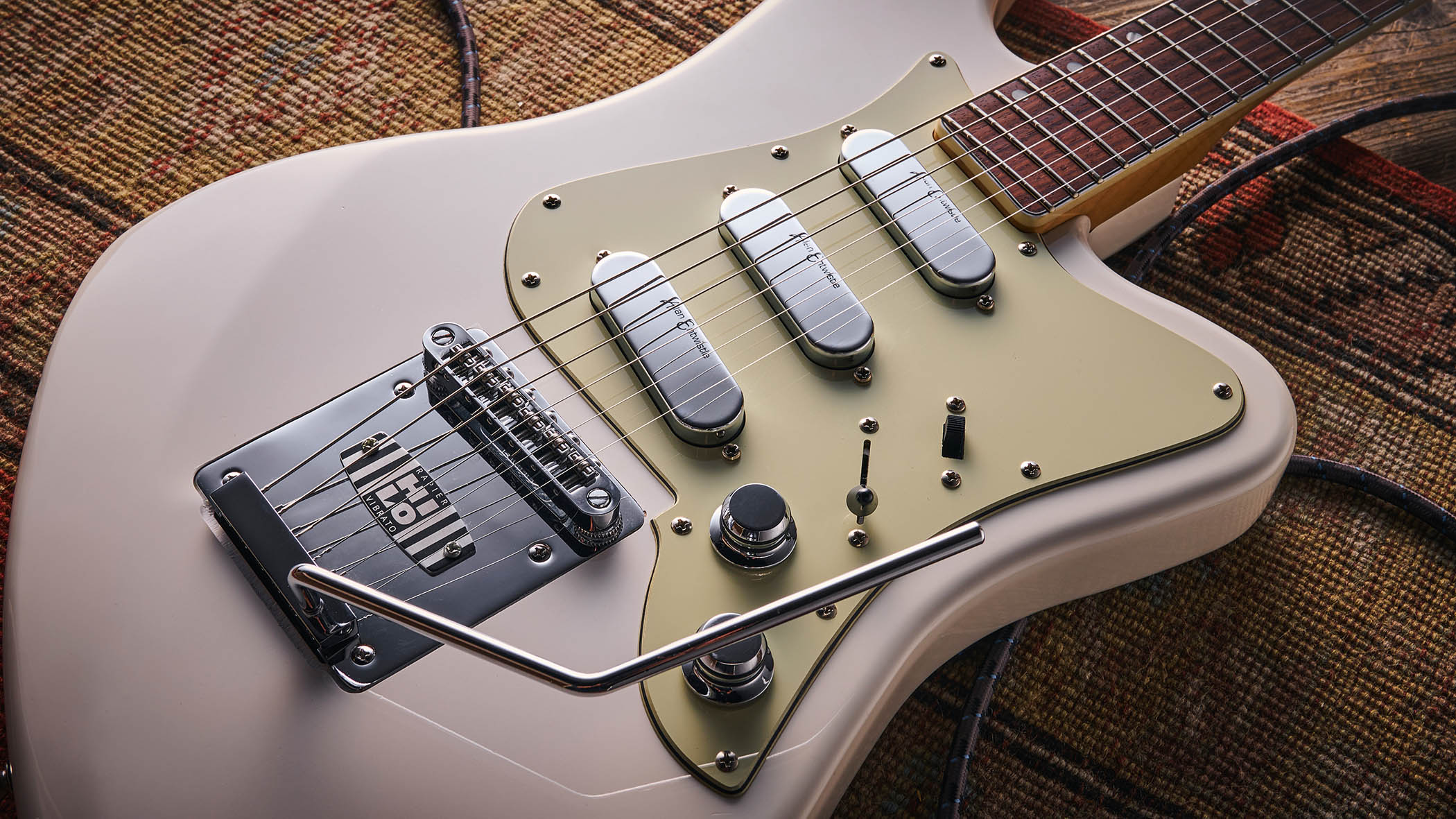
Continuing our ‘guess the guitar’ game, the Astrostar appears to be modelled on the Eastwood Univox UC3. Is this correct?
“Well spotted! I actually bought a Univox UC3 when I was still working in Australia. I really like the Univox stuff. It had a neat vibrato with that fixed bridge at the front and it added some resonance. That’s what I’ve tried to do with the vibrato on the Astrostar.
“The pickups on that old Univox were amazing, too. They had really tall Alnico magnets, I’d say about 12mm. They weren’t wax potted and they sounded incredible – a real twang. It had a good neck, too, and it really makes you wonder about the Japanese guitars produced back then. They weren’t so bad at all.
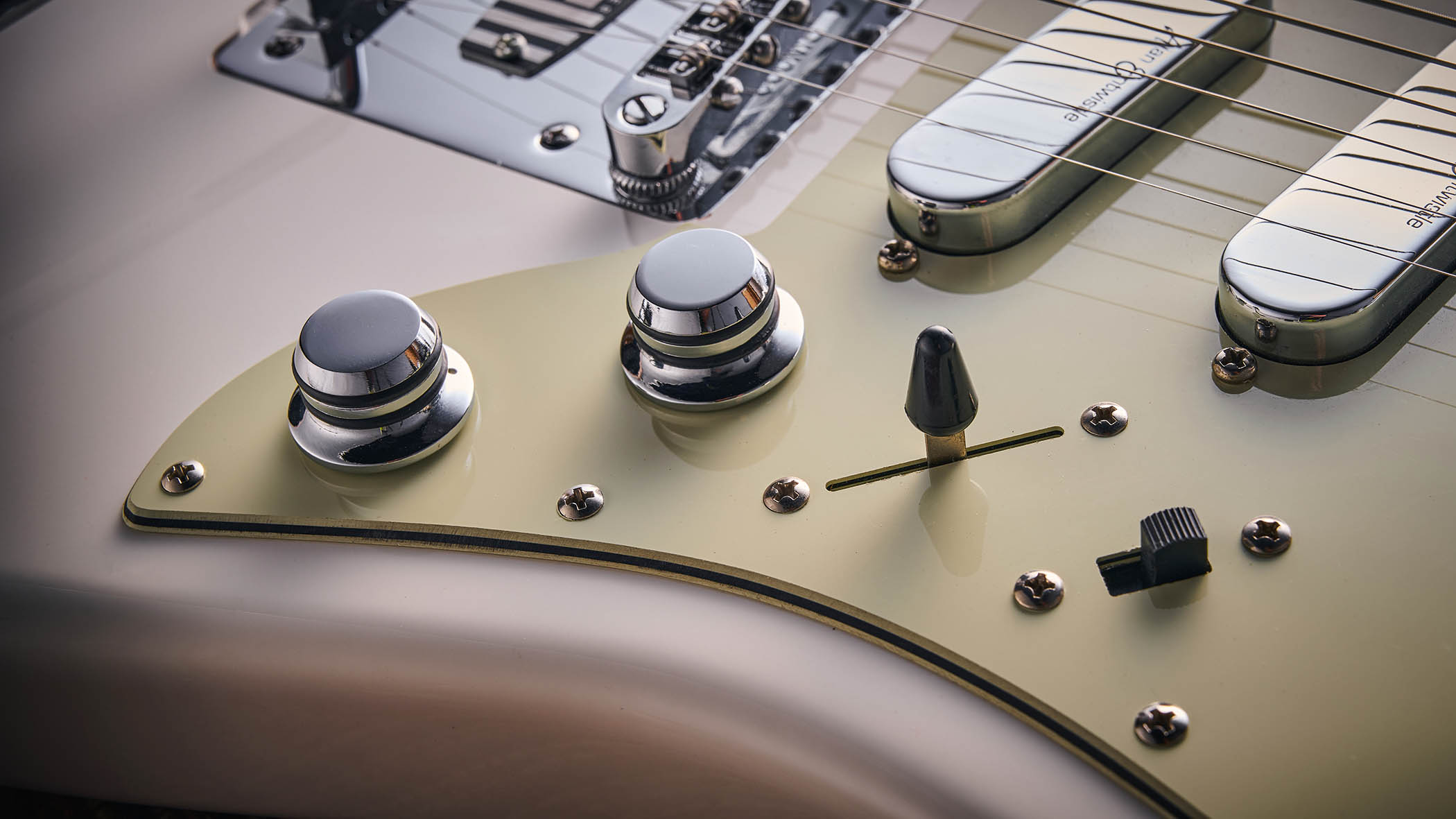
“Under the hood the Astrosonic VX single coils are almost identical to the early Vox pickups. They have a coil and in the centre is a ceramic magnet. ‘TS3’ is the pickup maker’s designation.
“I also make the Burns Tri-Sonic pickups, and the Astrostar’s pickups are basically Tri-Sonics and so were the original Vox pickups. There were slight differences, but [they were] more or less the same and, unlike the original Tri-Sonics, they don’t have a loose coil, it’s a proper bobbin.
“You’re right that the pickup covers do round the sound a little bit. They’re obviously not hum-cancelling, but the covers certainly help to reduce noise. And I do give the pickup factory instructions on [making sure they don’t sound overly potted]. I want them to be lively, alive.”
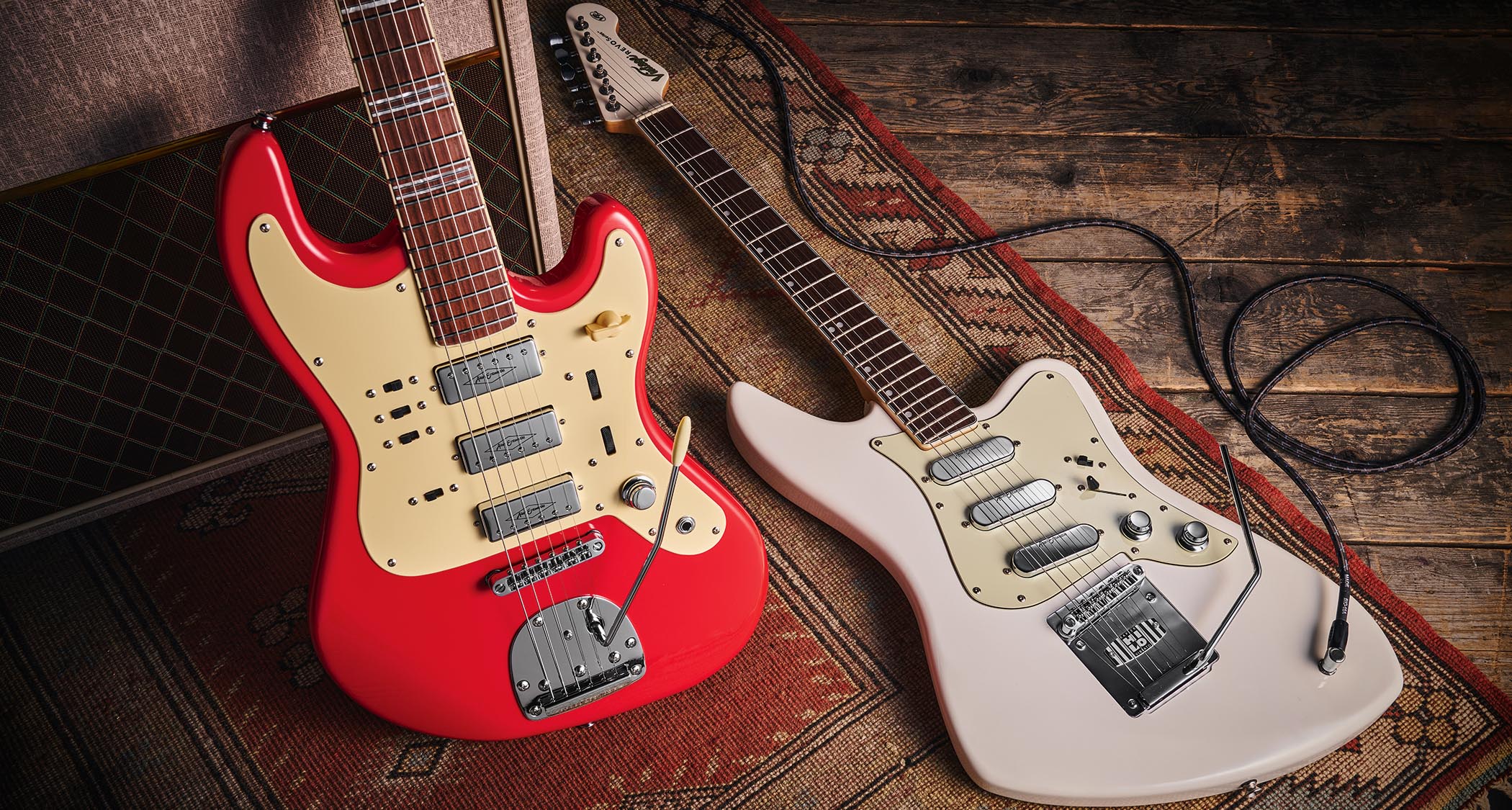
We understand you discovered the unusual dual-coil gizmo used for the Astrostar’s bass-cut in an electronics store in China that specialises in transformers.
“Yes. They work a little like the ATN, they’re an inductance. But I had to put two [coils] in series because otherwise there would have been too much circuit loss. When you engage the bass-cut, the signal goes through the two coils, which have a laminated steel core, and then to earth, which actually makes the bass-cut more top-end-y.
“If you go back to the ’60s, Fender had their ‘strangle’ switch, as it was nicknamed on the Jaguar. Burns had their Wild Dog switch, which is actually something a little different. But they’re all heading for basically the same effect. I don’t think those circuits were that popular, but today people are finding a way to use them, certainly if you want some extra jangle.”
Another new REVO model for this year is the Sessionman, your take on the Les Paul Recording guitar that baffled most players back in the day.
“We had fun with that. [It’s not just a repro], we’ve added coil-splits, which the original didn’t have, and we’re using the ATN on there, too. The Les Paul Recording sounded okay if you set it up right. I actually had one and found I needed an outboard preamp to make it sound okay.
“The pickups we’re using now on the Sessionman are high impedance, not low impedance. Actually, Gibson’s original low-impedance pickup measured a staggeringly low 8ohms! The pots were really low values, too. I did try all that, but I wasn’t too impressed with the results, so I went to high impedance and more regular values.”
- “Something a little different, with vibey and diverse sounds for not a lot of money”: Vintage REVO Galactica and Astrostar review
- This article first appeared in Guitarist. Subscribe and save.







